Finding fragrance notes is not just for expert perfumers. Anyone can train their nose to identify florals, woods, spices, and more. The shocker is that your environment can change how a perfume smells, even when using the same testing strip. Ignore the usual advice about splashing scents straight onto your skin and start by transforming your space instead. That is where true scent discovery begins.
Table of Contents
- Step 1: Prepare Your Scent Exploration Environment
- Step 2: Gather Essential Fragrance Resources
- Step 3: Smell And Identify Basic Scent Groups
- Step 4: Use Testing Strips For Fragrance Evaluation
- Step 5: Document And Compare Your Findings
- Step 6: Verify Scent Families For Future Reference
Quick Summary
| Key Point | Explanation |
|---|---|
| 1. Select a Neutral Scent Exploration Space | Choose a clean, well-ventilated room free from strong odours to enhance scent perception during exploration. |
| 2. Use High-Quality Testing Strips | Testing strips allow for careful fragrance sampling while avoiding interference from skin chemistry and personal scents. |
| 3. Document Your Observations Systematically | Create a structured journal to track notes, impressions, and emotional responses for future fragrance comparisons. |
| 4. Understand Basic Fragrance Families | Familiarise yourself with four scent groups: floral, woody, oriental, and fresh, to develop perceptual skills in scent analysis. |
| 5. Regularly Update Your Fragrance Reference System | Maintain a detailed archive of fragrances and their characteristics to refine your olfactory knowledge over time. |
Step 1: Prepare Your Scent Exploration Environment
Understanding how to find fragrance notes begins with creating the perfect sensory environment. Professional perfumers and fragrance experts know that preparing your exploration space is crucial for accurate scent perception. Your surroundings directly impact how you experience and identify complex perfume compositions.
Start by selecting a neutral room with consistent temperature and minimal external odours. Avoid kitchen areas, recently cleaned spaces, or rooms with strong air fresheners that could interfere with your olfactory assessment. A clean, well-ventilated space with natural light provides the optimal setting for discovering fragrance nuances. Research from the Britannica Encyclopedia confirms that environmental conditions significantly influence scent perception.
Prepare your exploration toolkit with essential items that will support your fragrance investigation. You will need:
- Clean white testing strips
- Unscented water for cleansing your palate
- A neutral notebook for recording observations
- Soft, indirect lighting
- A comfortable chair positioned away from distracting smells
Before beginning your fragrance exploration, ensure you are in a calm state. Avoid wearing strong personal fragrances, consuming spicy foods, or smoking, as these can temporarily alter your sense of smell. Professional perfume experts recommend waiting at least 30 minutes after eating or drinking anything strongly flavoured before starting your scent investigation.
If you want to learn more about building a sophisticated fragrance collection, our guide offers additional insights into creating the perfect sensory environment for perfume exploration.
Step 2: Gather Essential Fragrance Resources
To successfully navigate the intricate world of fragrance notes, you will need a carefully curated collection of tools and references. Professional fragrance enthusiasts understand that proper preparation transforms casual scent exploration into a precise sensory investigation.
Research from the National Association for Holistic Aromatherapy emphasizes the importance of systematic fragrance evaluation. Your essential toolkit should include precision instruments that enable nuanced scent analysis. Begin by acquiring high-quality testing strips, which allow you to sample fragrances without direct skin contact. These white paper strips absorb and release fragrance molecules, providing a clean surface for detecting subtle note transitions.
Complement your testing strips with a dedicated fragrance journal. This notebook will become your personal reference guide, documenting each perfume’s unique characteristics. Record details such as initial impressions, note progressions, and personal reactions. Select a journal with unlined or grid pages that provide structured yet flexible space for comprehensive annotations.
Consider additional resources to enhance your fragrance exploration:
- Neutral coffee beans for olfactory palate cleansing
- Magnifying glass for examining fragrance strips
- Digital timer for tracking note progression
- Reference guide of common fragrance families
Temperature and lighting are critical factors in accurate scent assessment. Choose tools that can be used in consistent environmental conditions, preferably near natural light but away from direct sunlight. Some perfume enthusiasts invest in specialized fragrance sampling kits that include professional-grade testing equipment.
Below is a summary table of essential tools and resources needed for effective fragrance note exploration, including their primary purpose and any professional tips from the article for optimal use.
| Tool/Resource | Purpose | Professional Tip |
|---|---|---|
| White testing strips | For neutral, precise fragrance sampling | Use high-quality strips to prevent scent contamination |
| Neutral notebook (fragrance journal) | Systematic documentation of observations | Select unlined or grid pages for flexible annotations |
| Unscented water | Palate cleansing between samplings | Avoid strongly flavoured foods or drinks beforehand |
| Neutral coffee beans | Olfactory palate reset | Use between samplings to refresh your sense of smell |
| Digital timer | Tracking note progression and scent evolution | Reassess scent at specific intervals for accuracy |
| Magnifying glass | Examine subtle residue on strips | Inspect for any visual clues along with olfactory notes |
| Soft, indirect lighting | Enhances focus and perception | Avoid direct sunlight to prevent scent distortion |
If you want to explore more about understanding fragrance composition, our comprehensive guide offers deeper insights into building your fragrance exploration toolkit.
Step 3: Smell and Identify Basic Scent Groups
Mastering how to find fragrance notes requires developing a systematic approach to understanding basic scent groups. Professional perfumers recognize that sensory exploration begins with recognizing fundamental fragrance families. Each scent group represents a unique aromatic landscape with distinct characteristics and emotional resonances.
The Perfume Society highlights the importance of understanding primary fragrance classifications. Begin your sensory journey by exploring four primary scent families: floral, woody, oriental, and fresh. Approach each family as a distinct sensory experience, training your olfactory perception to distinguish subtle nuances.
The table below provides an overview of the four primary fragrance families as discussed in the article, including their typical characteristics and common emotional associations to help guide systematic scent identification.
| Fragrance Family | Main Characteristics | Common Notes | Emotional Associations |
|---|---|---|---|
| Floral | Delicate, feminine, fresh | Rose, jasmine, lily, gardenia | Romantic, uplifting |
| Woody | Earthy, robust, warm | Sandalwood, cedar, patchouli | Grounded, stable, masculine |
| Oriental | Warm, spicy, exotic | Vanilla, amber, spices | Sensual, mysterious |
| Fresh | Crisp, clean, invigorating | Citrus, marine, green notes | Energetic, refreshing |
Start with floral scents, which typically represent delicate and feminine aromas derived from various flowers. These fragrances often include rose, jasmine, lily, and gardenia notes. When sampling, close your eyes and visualize the corresponding flower, allowing your imagination to enhance your sensory perception. Pay attention to how the scent evolves from initial application to its final impression.
Your exploration should include systematic sampling techniques:
- Hold testing strips 10 centimetres from your nose
- Inhale gently and briefly
- Wait 30 seconds between different fragrance samplings
- Reset your olfactory sense with neutral smells like coffee beans
Woody fragrances represent another crucial scent group, characterized by earthy, robust aromas like sandalwood, cedar, and patchouli. These notes often evoke feelings of warmth, stability, and masculinity. Train yourself to distinguish between light woody notes and deeper, more intense woody compositions.
Oriental and fresh fragrance families complete your foundational exploration.
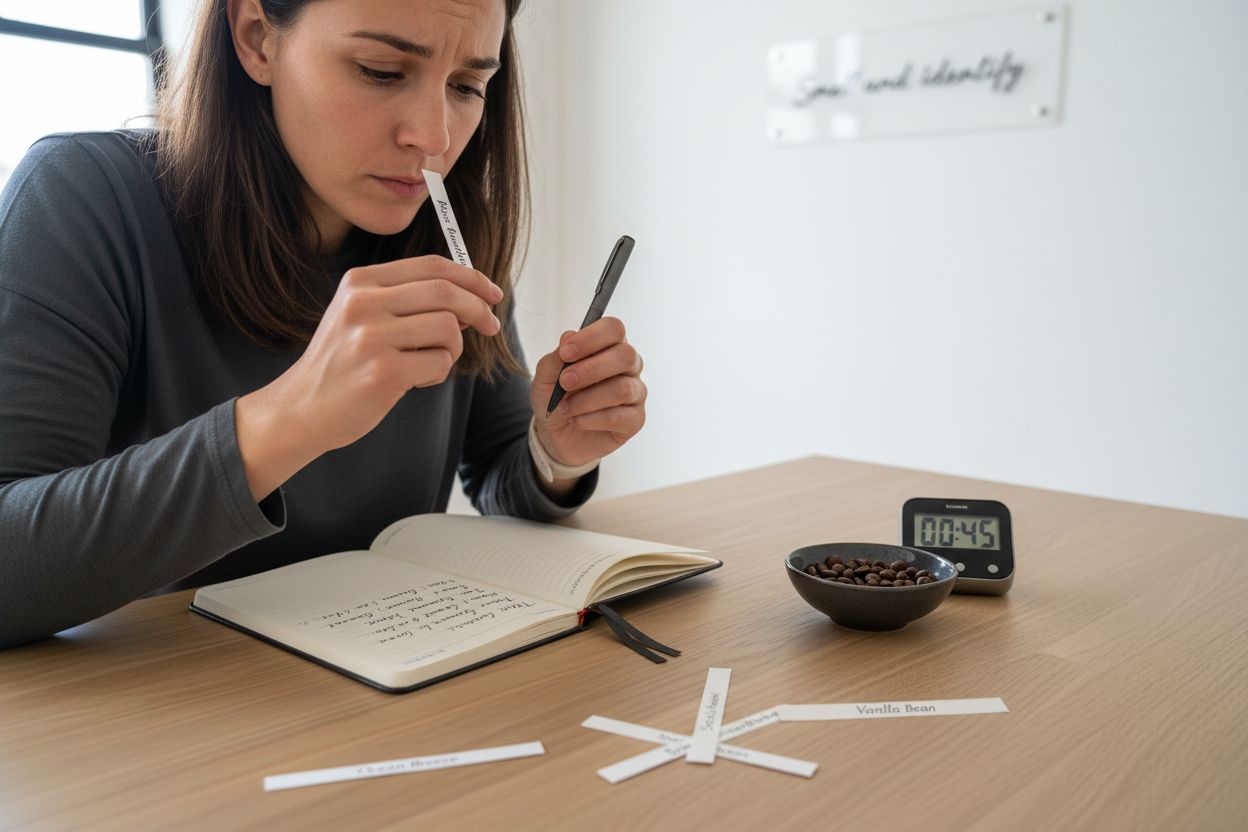 Oriental scents blend warm, spicy elements like vanilla and amber, while fresh fragrances incorporate crisp, clean notes such as citrus and marine accords. Developing a nuanced understanding requires patience and repeated exposure.
Oriental scents blend warm, spicy elements like vanilla and amber, while fresh fragrances incorporate crisp, clean notes such as citrus and marine accords. Developing a nuanced understanding requires patience and repeated exposure.
If you want to discover more about fragrance note examples, our comprehensive guide offers deeper insights into perfume composition.
Step 4: Use Testing Strips for Fragrance Evaluation
Testing strips are the professional perfumer’s primary tool for precise fragrance note identification. Unlike skin application, these white paper blotters provide a neutral surface that captures and reveals a perfume’s complex aromatic progression without personal body chemistry interference.
Research from the National Association for Holistic Aromatherapy recommends systematic sampling techniques for accurate fragrance evaluation. Begin by selecting high-quality, uncoated white testing strips. These specialized strips absorb fragrance molecules consistently, allowing you to track scent transformations methodically.
Approach each testing strip as a scientific instrument. Hold the strip approximately 10 centimetres from the fragrance bottle, allowing a controlled application. Dip the strip briefly, ensuring complete but not excessive saturation. Immediate labelling is crucial - record the fragrance name, date, and initial impressions directly on the strip to maintain precise documentation.
Your systematic evaluation should include:
- Smell the strip immediately after application
- Wait 15 minutes and reassess
- Note how scent changes over time
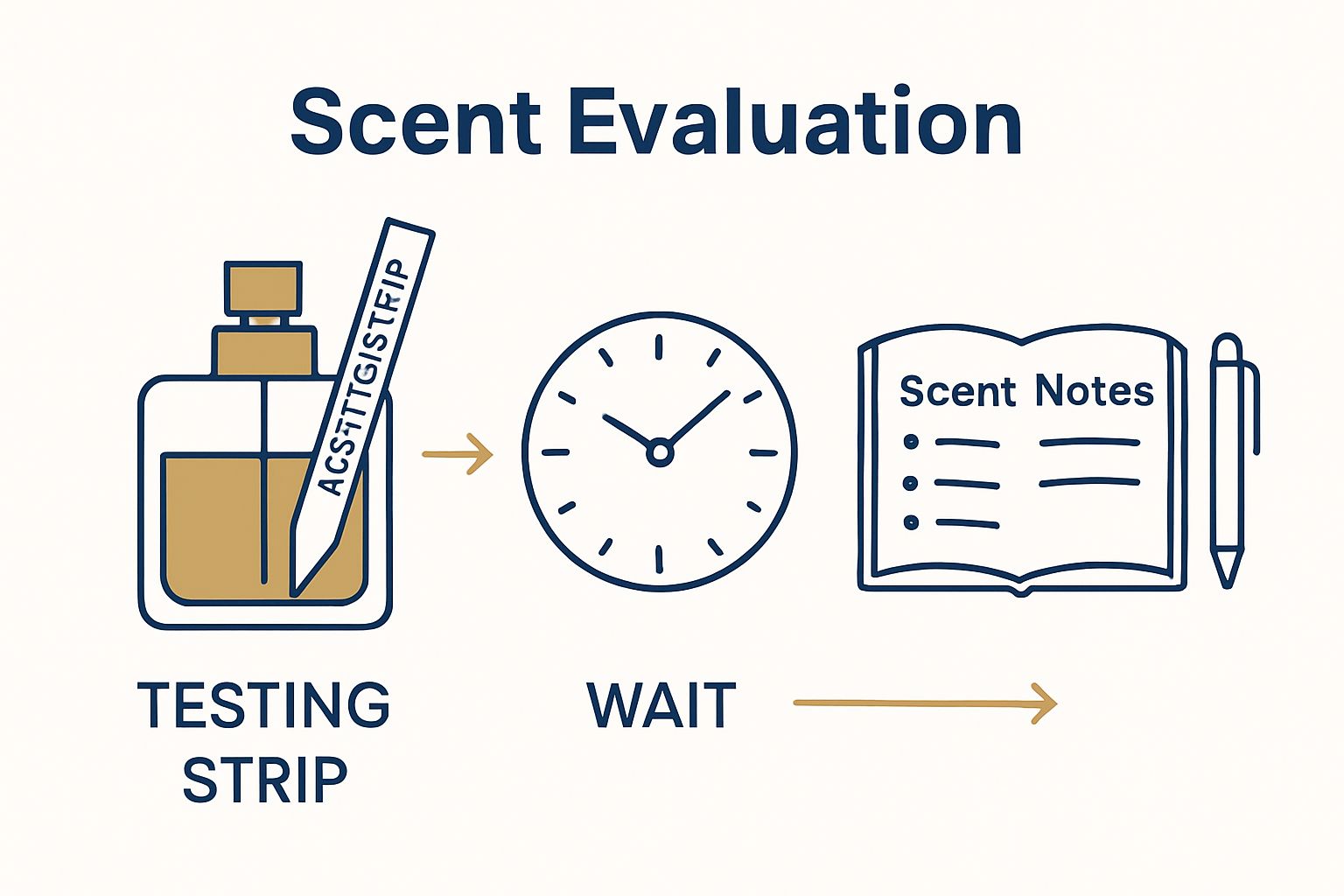
- Compare different fragrance strips side by side
Pay special attention to how fragrance notes evolve.
Top notes reveal themselves instantly, typically presenting bright, volatile aromas like citrus or light herbs. Middle notes emerge after 10-15 minutes, representing the perfume’s heart with floral or spicy characteristics. Base notes require patience, developing fully 30-45 minutes after initial application.
Professional tip: Always keep your testing strips in a controlled environment, away from direct sunlight and extreme temperatures. Some enthusiasts create a dedicated fragrance evaluation journal, attaching strips and documenting their precise olfactory journey.
If you want to explore more about identifying fragrance notes naturally, our comprehensive guide offers deeper insights into perfume exploration techniques.
Step 5: Document and Compare Your Findings
Transforming your sensory observations into a structured fragrance analysis requires meticulous documentation and comparative techniques. Professional perfume enthusiasts understand that comprehensive note-taking transforms random scent experiences into meaningful olfactory research.
The Perfume Society recommends creating a systematic documentation approach that captures the nuanced evolution of fragrance notes. Begin by designing a standardized evaluation template in your fragrance journal. Include dedicated sections for initial impressions, note progression, emotional responses, and comparative observations.
Your documentation should capture multiple dimensions of each fragrance experience. Beyond simply recording scent characteristics, consider documenting contextual elements that might influence perception. Note the time of day, your emotional state, and ambient temperature during testing. These contextual details provide deeper insights into how environmental factors interact with fragrance perception.
Comparing fragrances requires a structured methodology:
- Evaluate no more than three fragrances per session
- Allow 15-20 minutes between different scent samplings
- Use neutral scent reset techniques like coffee beans
- Cross-reference notes with fragrance family characteristics
Professional tip: Create a rating system that goes beyond simple likes and dislikes. Develop a nuanced scoring method that evaluates complexity, note progression, longevity, and emotional resonance. Use a 10-point scale with specific criteria for each category, transforming subjective experience into objective analysis.
During your comparative process, pay special attention to how different fragrances within the same scent family interact. Notice subtle variations in note composition, understanding that two woody fragrances can present dramatically different olfactory experiences. Your documentation becomes a personal reference library, tracking your evolving fragrance understanding.
If you want to understand more about perfume selection strategies, our comprehensive guide offers additional insights into developing your fragrance expertise.
Step 6: Verify Scent Families for Future Reference
Transforming your fragrance exploration into a comprehensive personal reference system requires systematic verification and cataloguing of scent families. Professional perfumers understand that creating a structured olfactory archive helps develop sophisticated sensory intelligence and future fragrance selections.
The Perfume Society recommends developing a methodical approach to scent family classification. Begin by creating a dedicated reference guide that categorizes your tested fragrances according to their primary and secondary scent characteristics. This personalized encyclopedia becomes an invaluable tool for understanding your olfactory preferences and expanding your aromatic knowledge.
Classify each fragrance with precision, considering its dominant and supporting note characteristics. A woody oriental fragrance, for instance, should be documented with its primary woody foundation and its underlying oriental warmth. Record specific note transitions, highlighting how top, middle, and base notes interact within each scent family.
Your verification process should include:
- Detailed note documentation
- Precise scent family classification
- Emotional response tracking
- Longevity and projection assessment
- Seasonal and situational recommendations
Professional tip: Develop a colour-coded or symbol-based notation system that allows quick visual recognition of fragrance families. This might involve using specific colours or symbols for floral, woody, oriental, and fresh categories, enabling rapid reference and comparison.
Consider creating digital or physical fragrance profile cards that capture comprehensive information. Include the fragrance name, brand, scent family, primary and secondary notes, testing date, and your personal rating. Some enthusiasts take this further by adding small samples or testing strips to create a tangible fragrance archive.
Regular review and update of your fragrance reference system is crucial. Periodically revisit your notes, reassess your initial impressions, and track how your olfactory preferences evolve over time. This approach transforms fragrance exploration from a casual hobby into a sophisticated sensory study.
If you want to discover more about selecting fragrances by family, our comprehensive guide offers additional insights into perfume classification strategies.
Transform Your Scent Knowledge into a Personal Fragrance Collection
You have learned how to identify fragrance notes like a true professional, mastering scent families, testing methods and documentation techniques. Yet, the biggest challenge is often finding luxury-inspired perfumes that capture these nuanced aromas without spending a fortune. Many enthusiasts want to build a collection that truly reflects their refined tastes, but high-end prices and limited access to niche blends hold them back. These are the very problems Niche Perfumes | Verset Collection was created to solve.

Discover the artistry behind our premium perfume alternatives. Each scent in our collection is crafted using European standards and inspired by world-renowned fragrances, ensuring you experience complex, long-lasting notes at a fraction of the designer cost. Browse Niche Perfumes | Verset Collection, explore Best Sellers, or start your search at versetparfums.shop today. Elevate your fragrance journey and redefine your personal scent library now, before your most coveted blends are gone.
Frequently Asked Questions
How can I create the best environment for exploring fragrance notes?
To create an optimal scent exploration environment, select a neutral, well-ventilated room, free from strong external odours. Ensure consistent temperature and use soft, indirect lighting to enhance your fragrance experience.
What tools do I need to identify fragrance notes effectively?
Essential tools include clean white testing strips for sampling, unscented water for palate cleansing, a neutral notebook for recording observations, and optional items like neutral coffee beans for olfactory reset and a digital timer for tracking scent progressions.
How do I differentiate between various fragrance families?
To differentiate fragrance families, start by familiarising yourself with the four primary groups: floral, woody, oriental, and fresh. Each group contains distinct characteristics, so engage your senses systematically, noting visual cues and scents as you sample.
What are the best practices for using testing strips for fragrance evaluation?
When using testing strips, hold them about 10 centimetres from the fragrance bottle and dip them briefly for saturation. Smell immediately after application, reassess after 15 minutes, and document any changes in scent to track its evolution accurately.
Recommended
- 7 Examples of Fragrance Notes to Enhance Your Perfume Collection – VersetParfums.Shop
- Master How to Identify Fragrance Notes in Perfumes – VersetParfums.Shop
- Understanding the Fragrance Shopping Guide for Everyone – VersetParfums.Shop
- Understanding Perfume Selection Tips for Every Buyer – VersetParfums.Shop

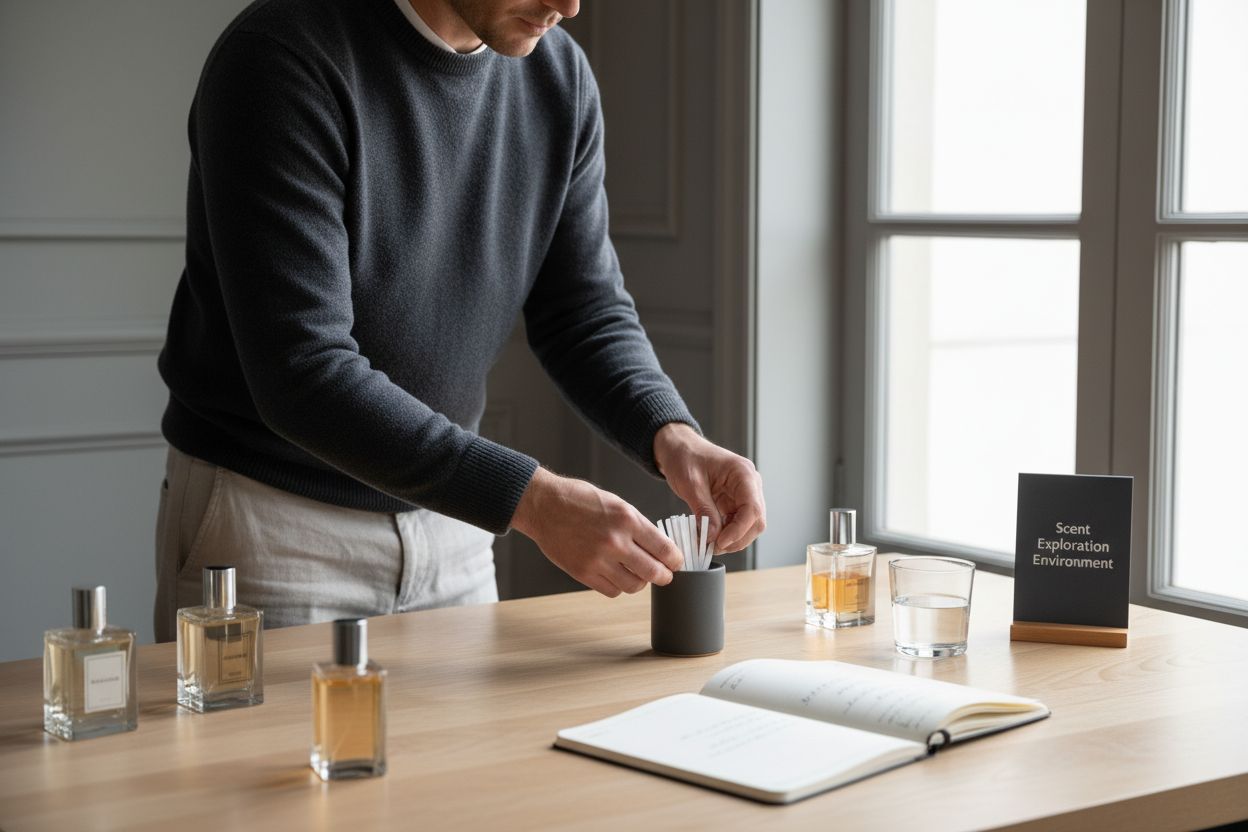


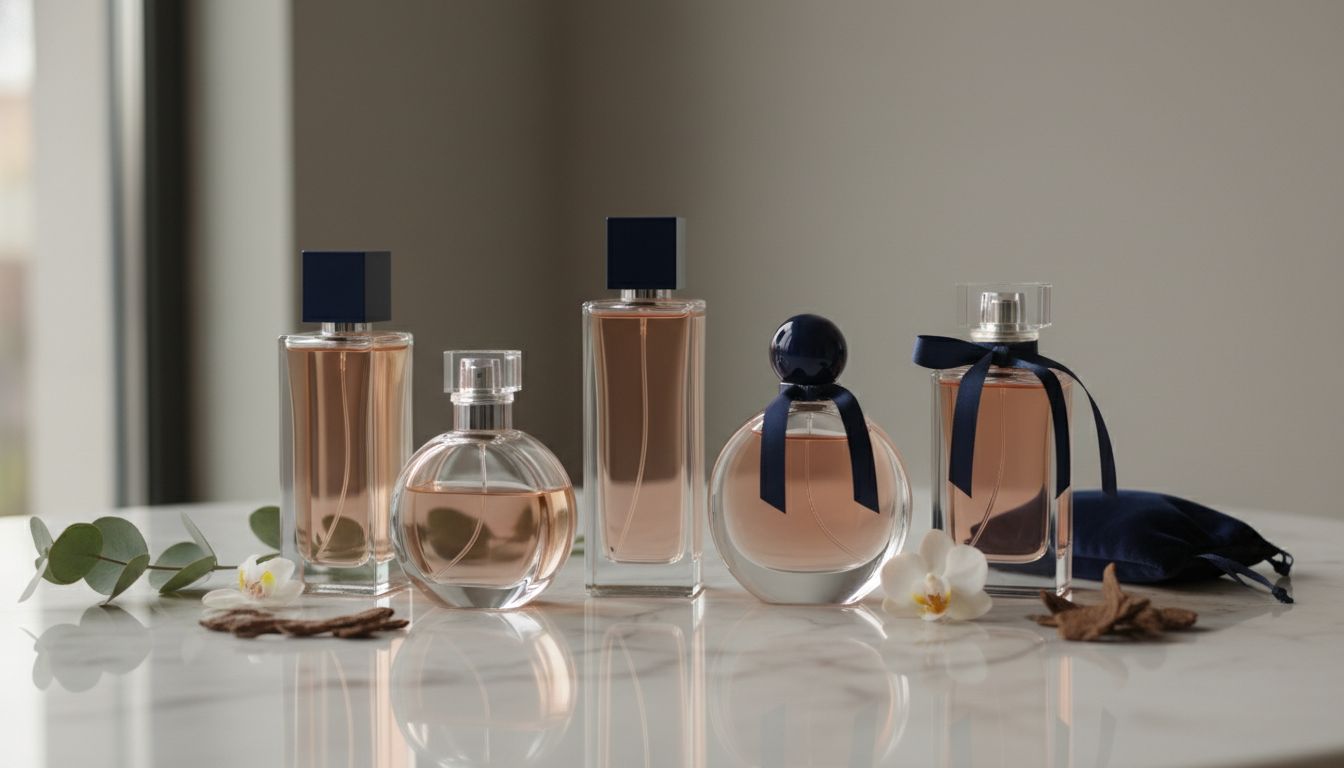
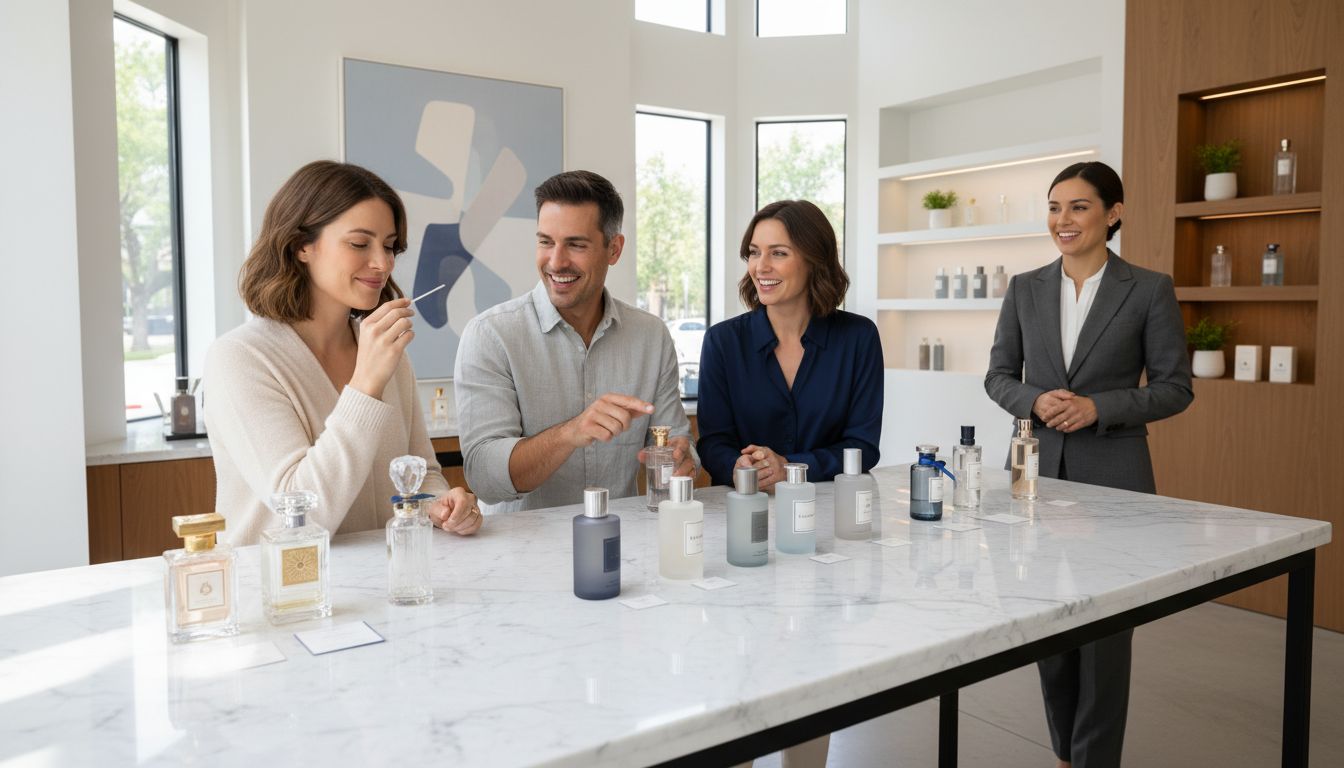

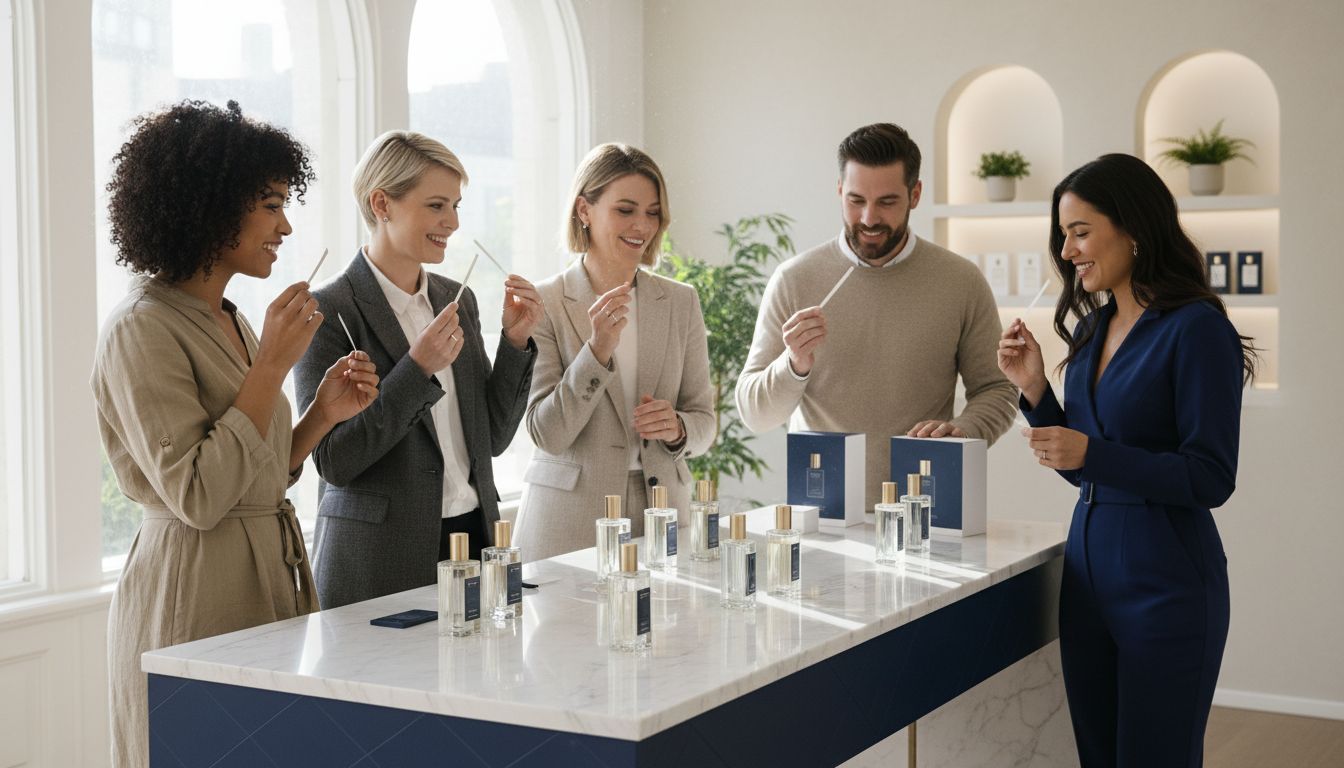
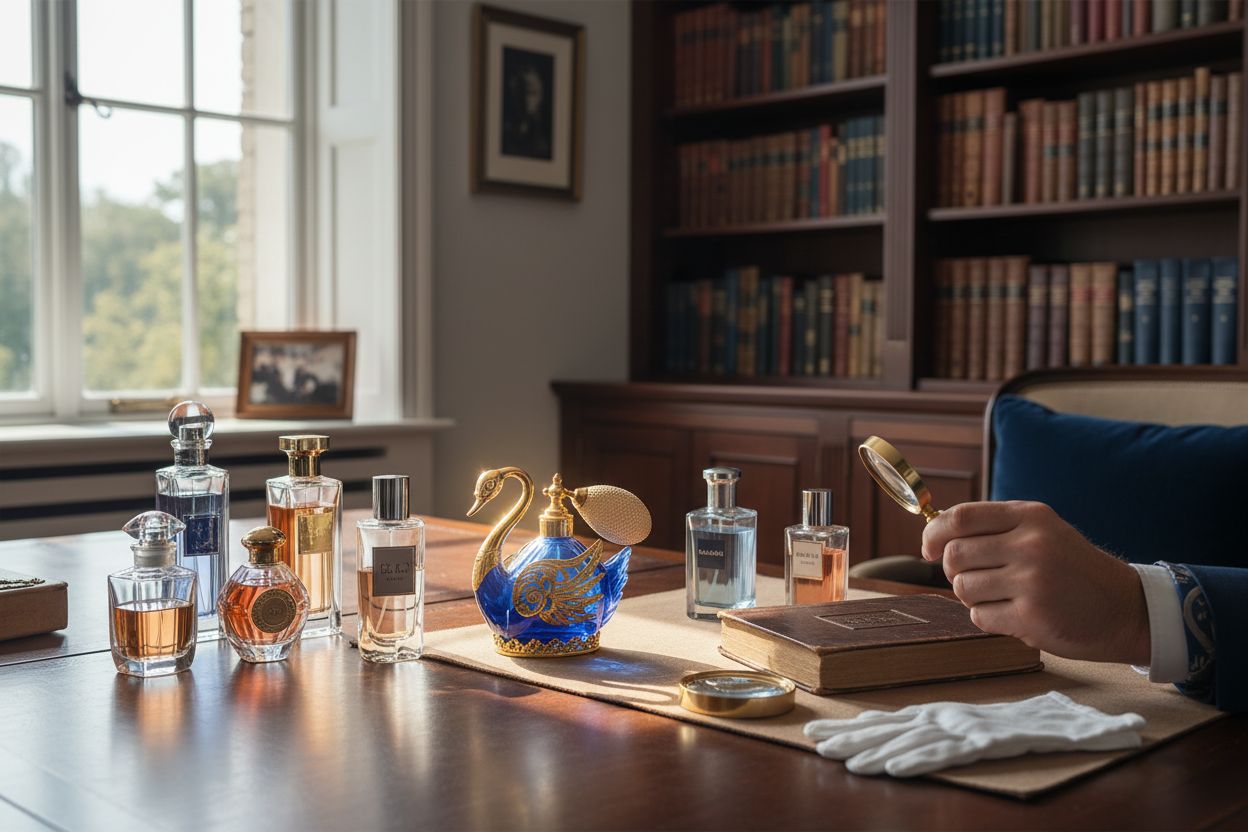
0 comments